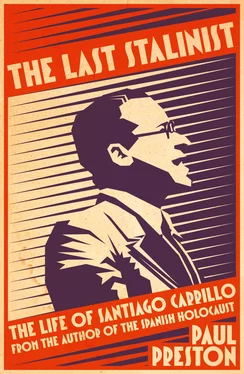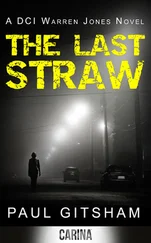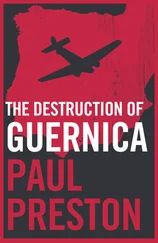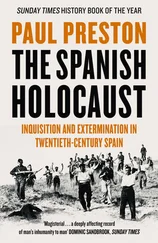Carrillo and the other prisoners lived in a kind of euphoric isolation, able to discuss politics all day without the preoccupations of daily life. Carrillo’s main concern was the health of his mother, who had serious heart problems, and he missed his girlfriend, Asunción ‘Chon’ Sánchez Tudela, a beautiful nineteen-year-old Asturian brunette whom he had met earlier in the year. Otherwise, he and the other political prisoners enjoyed relatively pleasant conditions. Carrillo had a typewriter and plenty of books in his cell. He claimed later to have spent most of his time reading the classics of Marxism until the early hours of every morning. He was particularly impressed by Trotsky. Indeed, he later described this period as his ‘university’. The warders put no obstacles in the way of the sending and receiving of correspondence or the virtually unlimited visits from comrades who brought them the legal press. To his surprise, the normally dour Largo Caballero was very good humoured. 11
It was not long before Carrillo and the other imprisoned revolutionaries were blaming the less radical sections of the Socialist movement for the defeat of October. From that it was a short step to trying to hound the reformists out in order to build a ‘proper’ Bolshevik party. Initially, they were not concerned about the Besteiristas since they had already been defeated within the UGT and many affiliated trade union federations in early 1934. Besteiro had opposed the revolutionary project and had stood aside in October. Nevertheless, during the October events, a group of extremists from the FJS had stoned Besteiro’s home. In consequence, he virtually withdrew from the political stage for a time. 12However, renewed calls for his expulsion from the PSOE finally provoked his followers to take up his defence against the youthful bolshevizers. That was not to be until June 1935. In the meantime, Carrillo and his allies concentrated their fire on Indalecio Prieto. The irony of that was that it had been Prieto’s followers in Asturias who had taken the most active part in the events of October.
Egged on by Carrillo, Largo Caballero began to take up ever more revolutionary positions. In part, this reflected his acute personal resentment of Prieto, who with backing from the Asturian miners and the Basque metalworkers hoped to rebuild the democratic Republic of 1931–3. In the view of both Prieto and the Republican leader and ex-Prime Minister Manuel Azaña, the vindictive policies of the Radical–CEDA coalition were provoking a great national resurgence of support for the Republic. Accordingly, Prieto argued that the immediate goal for the left had to be the recapture of state power by a broad coalition that could ensure electoral success and thus bring working-class suffering to an end. In contrast, Carrillo and Largo Caballero believed that the repressive policies of the Radical–CEDA cabinet had dramatically undermined all working-class faith in the reforming possibilities of the Republic. 13
In early 1935, those members of the PSOE executive committee not in prison were highly receptive to the arguments sent out by Prieto from his exile in Belgium in favour of a broad coalition with the Left Republicans. Their views were publicized within the Socialist movement in April by means of a circular which made an intelligent plea for the use of legal possibilities to defend the working class. 14The imprisoned Largo Caballero was informed about this initiative but did not object. Nevertheless, it infuriated Carrillo and the bolshevizers who advocated an exclusively proletarian revolutionary bloc. Prieto, thinking in terms only of a legal road to power, knew that not to ally with the Republicans would result in a disastrous three-sided contest as had happened in the elections of 1933. He was determined not to let the party fall into the hands of the extremist youth who, he believed, had to be obliged to accept party discipline. 15
Prieto could count on support from the Asturian miners’ leader Ramón González Peña, who was widely considered to be the hero of October and had recently escaped a death sentence. In a letter to Prieto, González Peña called for a broad anti-fascist front for the next elections. He bitterly criticized Largo Caballero and his imprisoned comrades for denying participation in the events of October. His greatest outrage was reserved for ‘the kids of the FJS’ for their demands that the PSOE be bolshevized, that Besteiro and his followers be expelled and that Prieto and the ‘centrists’ be marginalized: ‘It would be an enormous shame if we were to suffer the misfortune of being led by the son of [Wenceslao] Carrillo and company.’ Copies of the letter, along with a similar letter from young Asturian members of the FJS imprisoned in Oviedo, were circulated throughout the Socialist Party, much to the annoyance of the imprisoned Caballeristas. Carrillo and others had sent González Peña a set of questions with the intention of getting his support for their plans. When they saw his answers in favour of electoral coalition and against the purging of the party, they refused to publish them. 16To their chagrin, Prieto had at his disposal his own newspaper, El Liberal de Bilbao , within whose pages he and Republicans could advocate an electoral alliance. 17
The fact that the reformist policies of the Republican–Socialist coalition had provoked the fury of the right convinced Carrillo that Spain’s structural problems required a revolutionary solution. However, Prieto was correct that most of the Socialists’ problems derived from Largo Caballero’s tactical error before the elections of 1933. Out of government, no change, reformist or revolutionary, could be introduced. October had exposed the Socialists’ inability to organize a revolution. Thus two valid positions were possible: Prieto’s advocacy of the electoral return to power and the gradualist road to socialism; and the one principally advocated by the Trotskyists, which recognized the revolutionary incompetence of both the PSOE and the PCE and aimed at the long-term construction of a genuine Bolshevik party. This was a position that Carrillo found attractive. However, both these strategies required a prior electoral victory. 18
The radical youth’s counter-attack against Prieto took the form of a long pamphlet, signed by the FJS president, Carlos Hernández Zancajo, entitled Octubre: segunda etapa . In fact, it had been written largely by Amaro del Rosal and Santiago Carrillo. 19The purpose was threefold: to cover up the FJS’s failures in the October events in Madrid, to combat Prieto’s interpretation of the Asturian rising as an attempt to defend the Republic, and to eradicate the influence of both Besteiro and Prieto from the Socialist movement as a first step to its bolshevization. The pamphlet began with a largely mendacious interpretation of the activities of the workers’ movement during 1934. Its authors pointed out correctly that the strikes of the construction workers, metalworkers and peasants had dissipated working-class energies while failing to mention that the ‘union organization’ blamed for these tactical errors was actually dominated at the time by members of the FJS. They blamed the defeat of October on Besteiro’s reformists, which was absurd. This was used to justify the ‘second stage’ announced in the pamphlet’s title, the expulsion of the reformists and the bolshevization of the PSOE, which signified the adoption of a rigidly centralized command structure and the creation of an illegal apparatus to prepare for an armed insurrection. Inhibited by Asturian backing for Prieto, the authors did not dare call for his expulsion but aggressively demanded the abandonment of his ‘centrist’ line in favour of their revolutionary one. 20
Prieto and others were convinced that the pamphlet had been concocted during the authors’ walks around the prison patio or courtyard with Largo Caballero. Years later, despite being the subject of rapturous praise in the pamphlet, Largo Caballero claimed that it had been published without his permission and that, deeply annoyed, he had protested to Carrillo. Carrillo himself was to admit later that his group had acted without the boss’s authorization. Later still, he categorized the view expressed in the pamphlet as puerile, deriving from ‘infantile leftism’. 21In an interview published in December 1935, however, Largo Caballero agreed with much of the pamphlet, albeit not with its demand for expulsions and for entry into the Comintern. 22
Читать дальше












